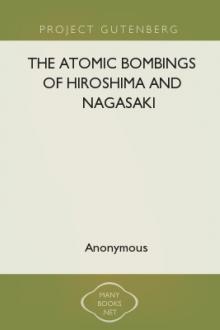The Slightly Abridged Version of The History of the New York Subway System by D'Asia Lipsey (best mystery novels of all time TXT) 📖

- Author: D'Asia Lipsey
Book online «The Slightly Abridged Version of The History of the New York Subway System by D'Asia Lipsey (best mystery novels of all time TXT) 📖». Author D'Asia Lipsey
The History~
The first demonstration for an underground railway transit system was built by Alfred Ely Beach in 1869. It only extended 312 ft. Broadway and lower Manhattan. His idea for a subway was moved by pneumatic tube technology, meaning it was boosted by air.
The tunnel was never extended for political and financial reasons. It was demolished when BMT Broadway, named for its location under Broadway, which was established in 1910.
The first fully operational underground subway was opened on Oct. 27, 1904.
The Great Blizzard of 1888—a massive blizzard in which New York was covered in 40-50 inches of snow and people were stuck in their houses for a week—helped showcase the benefits of underground transportation systems in general.
The oldest lines still in use opened in 1885 as part of the BMT Lexington Avenue Line in Brooklyn, and is now part of the BMT Jamaica line.
By the time the 1st subway had opened lines had joined into two main privately owned systems: the Brooklyn Rapid Transit, BRT, later Brooklyn Manhattan Transit, and the Interborough Rapid Transit. All lines built or improved for either IRT or BMT after 1913 were built by the city and leased to the companies.
The first line of the city-owned and operated Independent Subway System-IND, opened in 1931 and was meant to compete with the private systems and allow some elevated railroads to be torn down.
In 1934 transit workers from BRT, IRT, and IND formed the Transport Workers Union of America. Local 100, which is what the program was organized as, remains the largest and most influential of the labor union.
In 1940 the two private systems were bought by the city. Several connections were built between the two and now operate as one division called B Division.
The Sept. 11 attacks resulted in service disruptions on lines running through lower Manhattan, mostly on IRT Broadway-Seventh Avenue line, which ran directly underneath the world trade center.
Sections of the tunnel underneath the Twin Towers were severely damage by the collapse and had to be rebuilt. Ten other stations were shut down while the debris and dust were cleaned up. By March 2002, seven were reopened, and the rest reopened on September 15 2002.
Construction
When IRT first opened the usual tunnel design was cut and cover. A street was, torn up to dig the tunnel below before being rebuilt from above. It worked well for digging soft dirt and gravel near surface.
Mining shields required for deeper sections, such as the Harlem and East River tunnels, which uses cast-iron tubes, segments between 33rd and 42nd streets under Park Avenue, 116th Street and 120th Street under Broadway, and 157th Street and Fort George under Broadway and Saint Nicholas Avenue, all of which used either rock or concrete-lined tunnels.
40 percent of the subway system runs on surface or elevated tracks, including steel cast iron elevated surfaces, embankments, and open cut and surface routes.
All of the construction methods are grade separated from road and pedestrian crossing, meaning two or more junctions are aligned a different heights so they won’t mess with traffic flow.
Publication Date: 04-01-2011
All Rights Reserved





Comments (0)